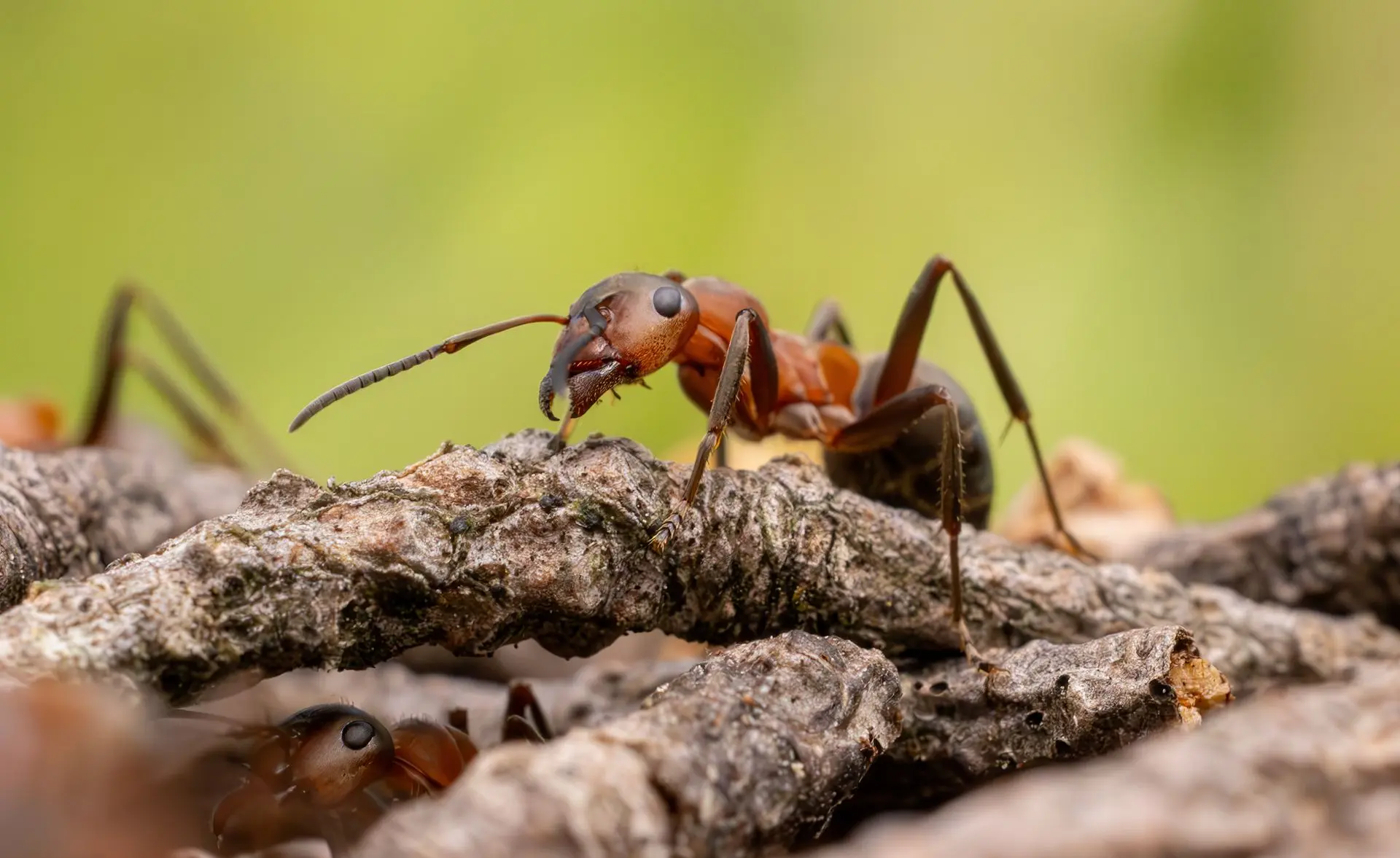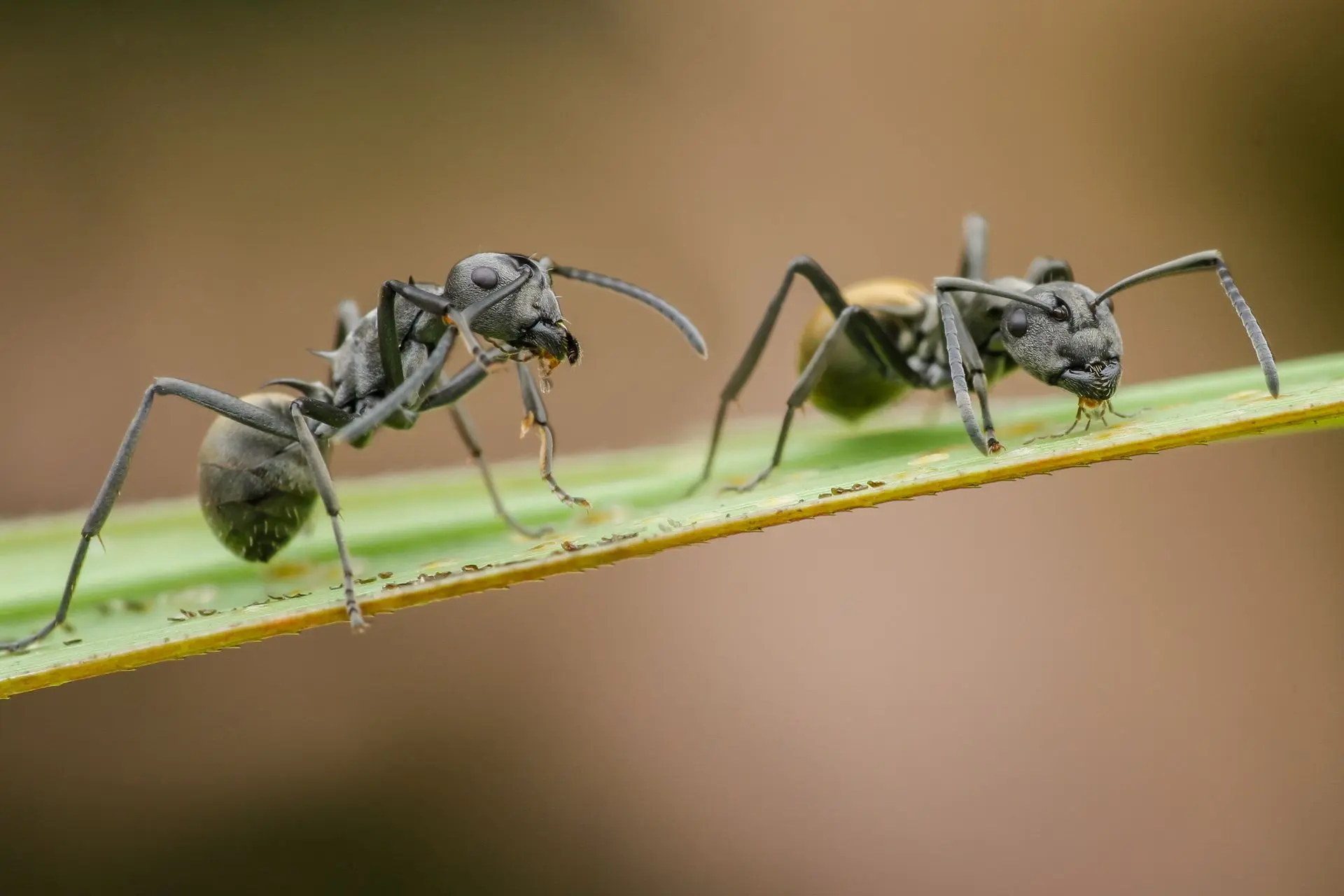Ants antennae
The ant's antennae are far and away the most important sense organs. They are inserted in sockets on each side of the frontal carinae, and consist of a series of joints of variable number and length. The lowest number, four, is found in the genus Epitritus; the greatest, thirteen, in the males of many of our common ants. Usually the males have one more joint than the females and workers. The first joint, known as the scape, is always considerably elongated, except in the males of some species.

The remainder of the antenna, the funiculus, consists of very much shorter joints, the articulations between which are less movable than that between the scape and funiculus. This latter articulation is of such a nature that the funiculus can be folded up against the scape producing the peculiar Formicid elbow in the antenna, and both this and the socket articulation at the insertion of the scape permit extraordinary freedom in the movements of the appendage. The funiculus may be of nearly uniform diameter throughout, with very similar joints, or from one to four of the terminal joints may be thickened and elongated and thus constitute a club.

Ants have two kinds of eyes: the compound, lateral eyes, two in number and placed on the sides of the head, and the simple, median eyes, ocelli, or stemmata, of which there are three on the vertex. Both kinds are best developed in the males, less in the females and least in the workers, which often lack the stemmata altogether. In addition to these great differences, which are constant in the three phases of nearly all species, there are considerable differences in the development of the eyes in the different genera.